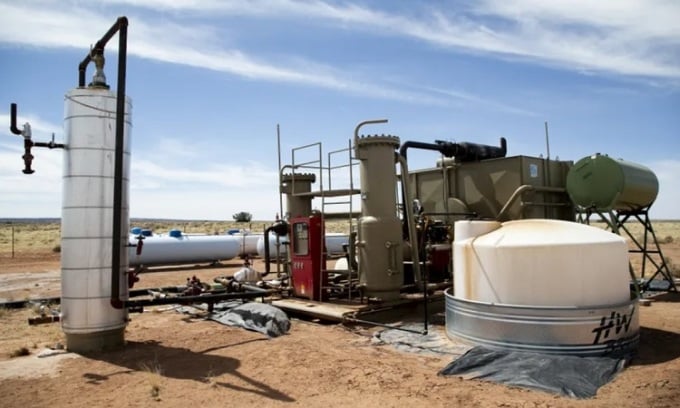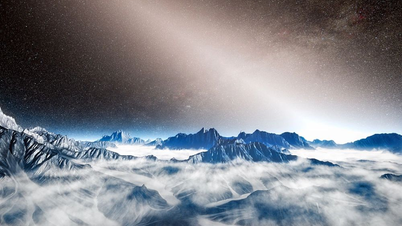Despite being the second most abundant element in the universe, helium is actually quite rare on Earth because it is easily blown away by the solar wind.

Helium mining operations near Chambers, Arizona, USA. Photo: AZ Central
Beyond its use in balloons, helium possesses many surprising properties and applications around the world , according to IFL Science . Helium is produced through the natural decay of radioactive uranium and thorium, a process that takes billions of years. Currently, helium is collected from natural gas pockets underground as a byproduct of natural gas filtration.
Because helium is so light, any helium that escapes from a container or from the production process rises to the edge of the atmosphere and is blown away from Earth by the solar wind. This is why helium is often described as the only truly non-renewable resource, according to the American Chemical Society. "It would take many, many millennia to create helium on Earth. It's the only element in the entire periodic table to escape Earth and fly out into space," said Sophia Hayes, a scientist at Washington University in St. Louis.
Helium is very useful because it is extremely cold. It has the lowest boiling point of any element, at -268.9 degrees Celsius. This characteristic makes it a particularly good choice for cooling superconducting magnets in magnetic resonance imaging (MRI) machines, and even as fuel for rockets flying into space. The Large Hadron Collider (LHC) in Switzerland needs about 120 tons of helium per week to keep it running, according to Bloomberg.
"Helium is a non-renewable resource. NASA and SpaceX need helium for rocket fuel. MRI machines need helium. The pharmaceutical industry depends on helium, and so does the Department of Defense ," said Bill Halperin, a physics professor at Northwestern University.
The U.S. federal helium reserve system, established in 1920 for use in balloons, supplies about 40% of the world's helium. Currently, this supply could be sold to the private sector within months, impacting the helium supply chain. Only a few other countries have significant helium reserves, including Qatar, Tanzania, and Algeria. Russia also plans to open a new helium plant, but the conflict in Ukraine could make the plan uncertain.
Estimates of the world's helium reserves vary widely. In 2019, David Cole-Hamilton, emeritus professor of chemistry at the University of St Andrews, estimated that the world only had enough helium for 10 years unless countries made greater efforts at recycling. The best estimates of remaining helium reserves are 100-200 years.
An Khang (According to IFL Science )
Source link




![[Photo] Prime Minister Pham Minh Chinh presides over a meeting on private sector economic development.](/_next/image?url=https%3A%2F%2Fvphoto.vietnam.vn%2Fthumb%2F1200x675%2Fvietnam%2Fresource%2FIMAGE%2F2025%2F12%2F20%2F1766237501876_thiet-ke-chua-co-ten-40-png.webp&w=3840&q=75)


![[Photo] Prime Minister Pham Minh Chinh presides over the conference announcing the establishment of the International Finance Centre in Vietnam.](/_next/image?url=https%3A%2F%2Fvphoto.vietnam.vn%2Fthumb%2F1200x675%2Fvietnam%2Fresource%2FIMAGE%2F2025%2F12%2F21%2F1766309817714_ndo_br_dsc-3400-jpg.webp&w=3840&q=75)




































































































Comment (0)